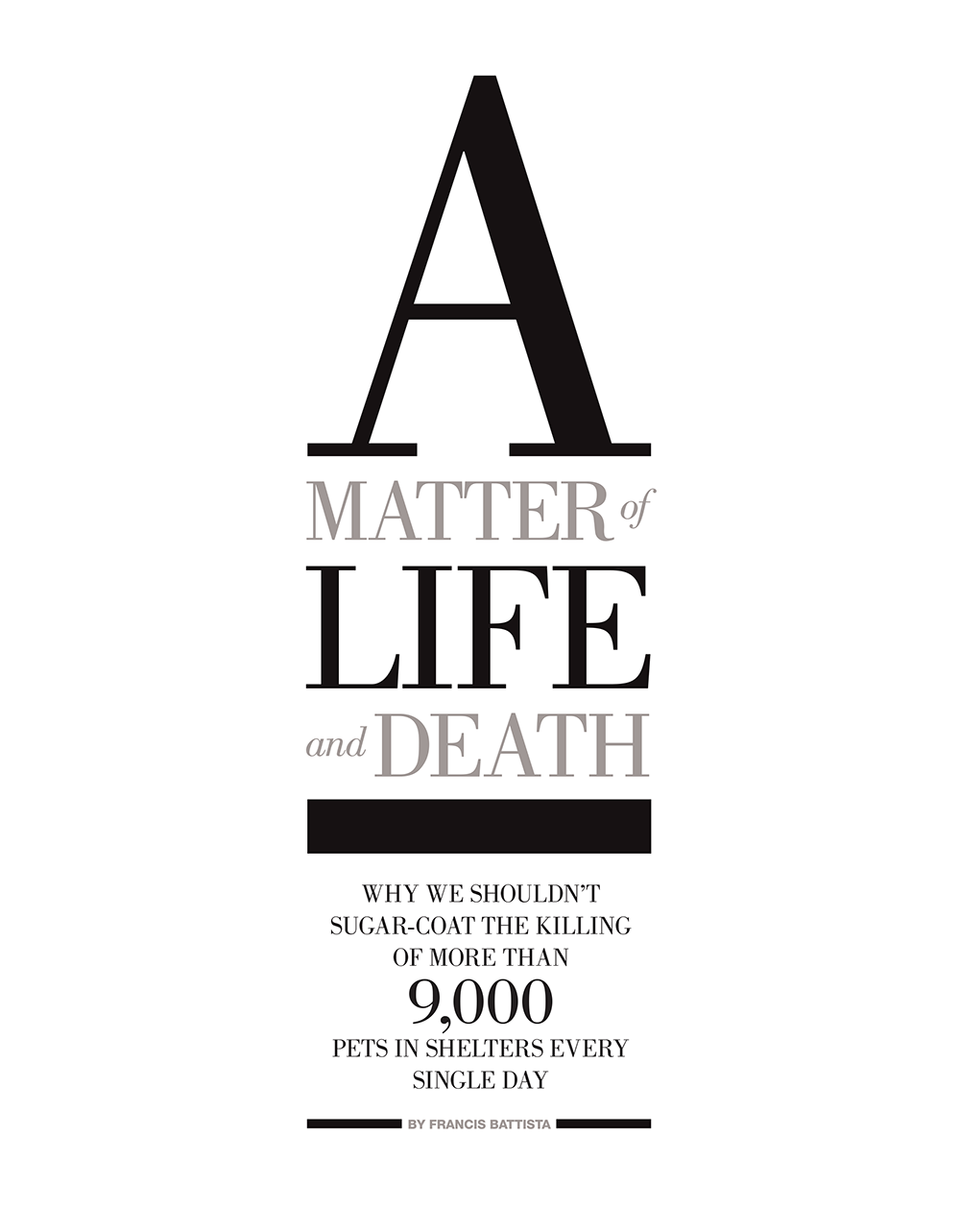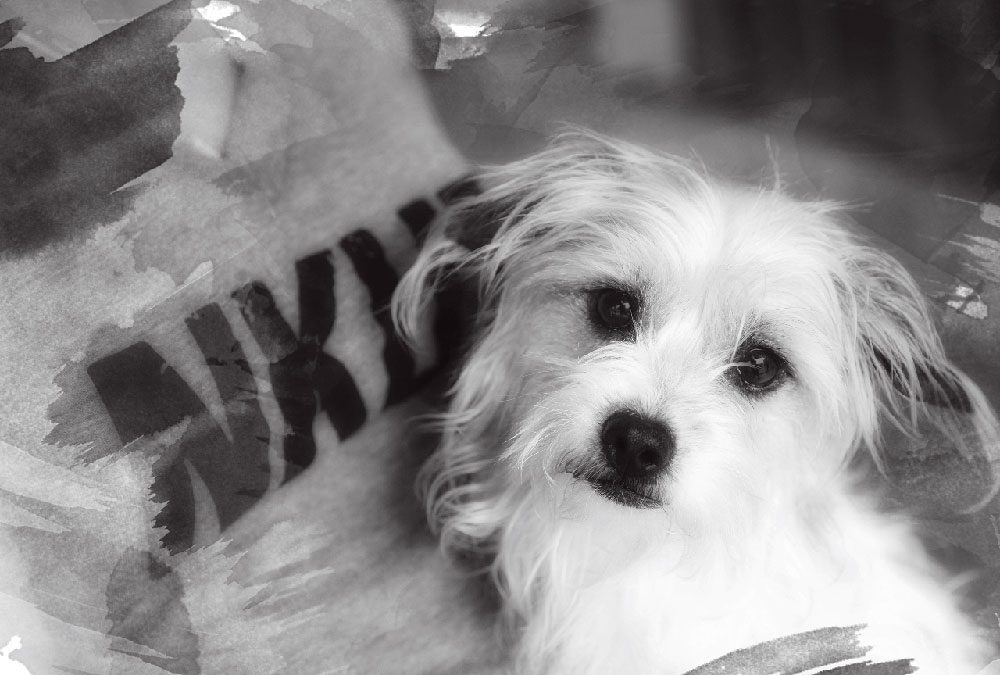

or as long as I can remember, there has been a running and, let’s face it, often heated disagreement within the animal welfare community regarding the terminology used to describe the rationale for the death of a healthy animal at the hands of a shelter veterinarian or worker. Was that animal “killed” or was that animal “euthanized”? And, at the end of the day, does it even matter what it’s called?
Yes, it most certainly does matter. And that’s because words matter. Their meanings matter. The images they evoke and the impact we feel when we hear them also matter. And we have to be able to call a spade a spade. If it’s killing, we should call it killing.
Right now, in the time it takes for you to read this piece, hundreds of healthy or treatable pets are being killed in shelters around the country. In fact, more than 9,000 animals will be killed today. Sadly, 9,000 more will be killed tomorrow. And, yes, 9,000 more will be killed the next day. These animals are not being euthanized; they are being killed. It may not be comfortable to say — or to hear, or to read, or to think about — but we must be able to speak the truth in order to accept the truth. And that acceptance begins with the use of a single word: killed.
No-kill: an affirmation
The no-kill movement is about much more than the implementation of efficiencies in shelter operations to reduce killing. It is at once an affirmation of the unique and irreplaceable quality of the lives of every pet in a shelter, and a repudiation of the longstanding and mystifying idea that killing homeless animals is an acceptable solution — to whatever problem you care to name. The fact that our society has tolerated such institutionalized killing (yes, killing) for more than a century suggests a much more fundamental problem than an excess of unwanted, stray and free-roaming animals.
As with any challenge, we can’t fix it if we are unwilling to acknowledge that it exists. The government-sanctioned and taxpayer-funded killing of homeless pets is wrong. Period. Any health, humane or public safety issue posed by homeless animals can and should be solved through humane, non-lethal means. The aim of Best Friends and the no-kill movement is to reprioritize and reorganize a system that currently allows the pointless deaths of millions of dogs and cats every year.
 Euthanasia vs. killing
Euthanasia vs. killing
At Best Friends, we believe strongly that the difference in the meaning of the words “euthanasia” and “killing” is important. After all, action follows intention and if you can convince yourself via verbiage like “euthanasia” that killing pets in shelters is the kind thing to do, then that act becomes acceptable and, for some, it even becomes justifiable. In fact, we can become desensitized to the dying. Why bother to change the status quo when you are comfortable with it? At our sanctuary, and in many organizations around the country, “euthanasia” is defined purely as an act of mercy. It’s an act reserved for animals who are suffering from an irremediable medical condition that a veterinarian has determined won’t allow an acceptable quality of life for the animal. In a municipal shelter setting, animals whose aggressive behavior is genuinely too dangerous for them to be candidates for rehabilitation and rehoming may be added to that list. All too often, when I tell people that I am a co-founder of Best Friends Animal Society, an organization dedicated to the no-kill movement, they say something like this: “No-kill — so that means you don’t put suffering animals to sleep?” No, that’s not what it means. It means that we stand for the idea that lethal methods should never be used to control pet populations or to make a shelter’s operation more manageable.
We must never lose sight of the fact that with advancements in behavioral and medical care for animals, the vast majority of animals in shelters can, and should, be saved. The only shelter animal deaths that can be called euthanasia are those for whom it is truly merciful. No healthy or treatable animal should be killed in a shelter when alternatives exist to save them — even if those alternatives require a change in priorities, policies and programs. Accordingly, we consider it killing when a dog or a cat’s life is ended to make room for incoming animals or for other considerations such as an animal’s age or the fact that the animal has special needs.
Understandably, it is caring shelter workers who are often the most proactive and vocal in trying to bring at-risk dogs and cats to the attention of the public and rescue organizations. These shelter workers often take sheltering jobs because they love animals. When they are tasked with the job of ending the life of a healthy or treatable dog or cat, these caring people are subjected to significant trauma, but using the word “killing” instead of the more palatable term “euthanasia” doesn’t make those shelter workers’ jobs less burdensome. Softening the language is also an insult to those animals by suggesting that killing them was somehow a kindness or a necessary evil. Their lives matter. Such deaths are a measure of a collective social failure that the no-kill movement seeks to correct. It may not seem so to the casual observer, but no-kill is a radical notion in that we are proclaiming, unambiguously, that a life is a life and killing homeless pets is wrong — not by virtue of their special relationship to humans, but because their lives have intrinsic value and they are not our lives to take.
Ironically, this killing is paid for by taxpayer dollars, which fund the operation of municipal shelters or animal control contracts awarded on a bid basis to humane societies, SPCAs or private contractors.
Yet polls show that the public, whose tax money is being spent, believes that the only animals that a shelter should be allowed to put to death are those who are either too sick or injured to be successfully treated or too dangerously aggressive to be safely adopted. Simply put, public opinion squares solidly with no-kill principles.

Saving them all
I know that using this type of language — words like “killing” and “dying” and “death” — can be painful to some and objectionable to others. For some, these are fighting words. Unfortunately, the term “no-kill” is sometimes used or taken as an accusation or finger-pointing, and that is wrong on both counts. The language of no-kill should only be read as an expression of the urgency and importance of the task before all of us, which is to end the killing of more than 9,000 pets in shelters every day. Let’s not deflect the immediacy of the need with words that portray the deaths of these animals as anything other than the tragedy that it is.
There is no shame in acknowledging the difference between killing and euthanasia. The only shame is in not doing everything in our power to end the killing.
Together, we can Save Them All.

